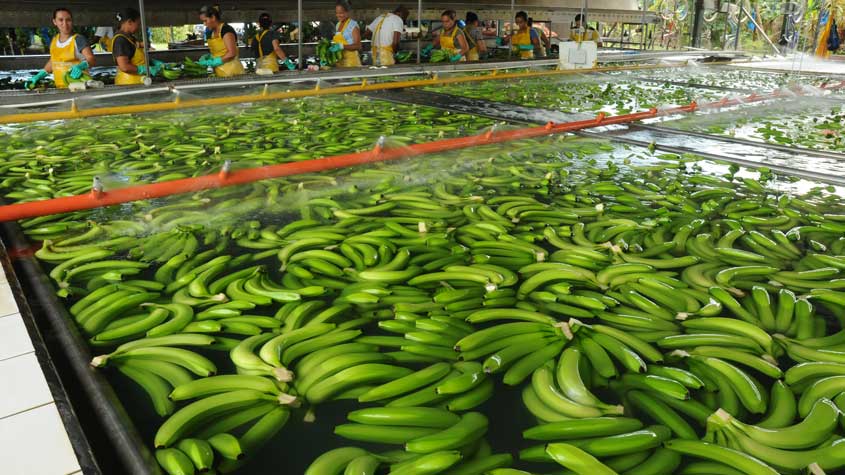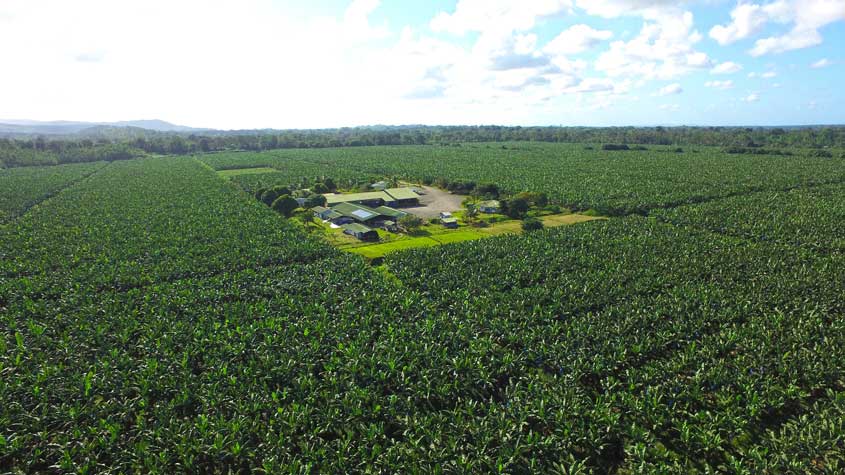バナノ・デ・コスタリカ地理的表示:環境の持続可能性を支援する
世界で上位3位のバナナ輸出国の一つであるコスタリカの経済にとってバナナの生産は非常に重要です。コスタリカは毎年、世界中に約1億2000万箱のバナナを輸出しています。
2011年、バナノ・デ・コスタリカは国で最初の地理的表示として登録されました。この動きにより、生産者は製品の原産地、その独特な品質および評判、そして彼らが採用している厳格な社会的および環境的生産基準を消費者に伝えることができるようになりました。地理的表示を得ることで、生産者はコスタリカのバナナを他の地域で生産されたバナナと区別できるようになりました。

地理的表示バナノ・デ・コスタリカの品質の奨励および保証を担当する規制機関は、コルバナ(La Corporación Bananera Nacional、Corbana)と呼ばれています。コルバナは現地の生産者と協力して、生産の拡大、そしてコスタリカ産バナナの品質の改善に取り組んでいます。コルバナの研究および開発プロジェクトでは、農薬の使用を削減しながら、バナナプランテーションの生産性を向上する革新的な手段と技術の特定を常に探求しています。

環境保全に対する自身の責任をはっきりと認識した上で、1992年、バナナ産業は任意でバナナ環境委員会(Banana Environmental Commission、CAB)の設立に合意しました。委員会の役割は、持続可能なバナナ生産の基準を確立し、コスタリカのバナナプランテーションの環境的パフォーマンスを監視することです。これに関して、CABはバナナ産業全体で天然資源管理業務の改善に取り組んでいます。例えば、CABは、バナナ包装工場による水の使用を最適化する措置を提示しました。これにより、最大90パーセントの水の節約が可能になりました。CABは、例えば、井戸の深さの削減を奨励することで、バナナの生産者が市場に出す前にバナナを洗うために使用する水の量の削減にも取り組んでいます。
さらに、地理的表示バナノ・デ・コスタリカを生産する全バナナ農家が、固形廃棄物管理や収穫の過程におけるプラスチックの使用に関する共通政策を順守しています。これに基づき、水路に浮く固形廃棄物を防止するための仕掛けが設置され、使用されたプラスチックはバナナ産業で再利用できる素材を製造するためにリサイクルセンターに送られます。

バナノ・デ・コスタリカの生産者は、特に廃棄物管理および農薬使用に関する規定の環境管理業務を遵守しているかどうかを確認するための定期的な監査を受けます。しかし、植物や動物を保護し、12,000ヘクタール以上の土地を自然保護区および森林として指定し、温室効果ガスを削減しているという事実が示すように、これは強い環境へのコミットメントを考えると問題ではないようです。
地理的表示バナノ・デ・コスタリカの全生産者は、地理的表示の製品仕様書に設定されている生産規則の共通設定に結びついています。そのようにして、地理的表示の管理および奨励に関してコルバナによって採用された環境に優しい政策は、コスタリカバナナ産業全体としての持続可能性を大きく改善する可能性を秘めています。このようにして、地理的表示は、食糧生産や取引を統制する国の法律よりもしばしば高く設定されている任意の環境基準の適用を通じて、持続可能な実務を促進するための重要な手段として機能しています。